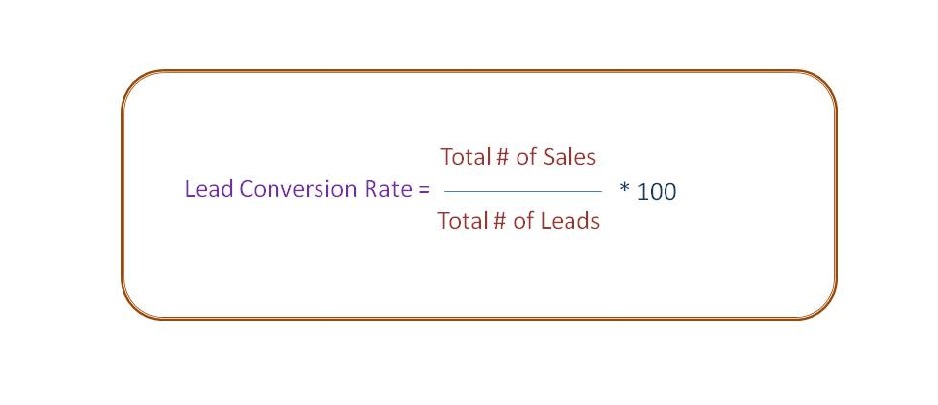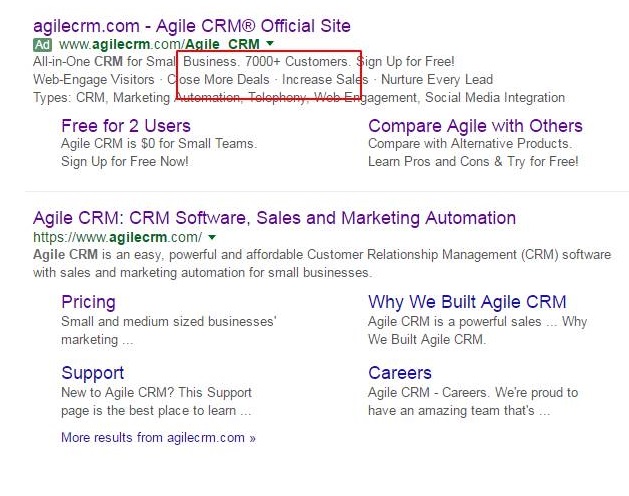10 Key Marketing Metrics to Watch
When you start spending a good amount of your marketing budget on various campaigns, it becomes necessary for you to measure the outcome. The ROI gained on every campaign needs to be at par and to analyze that you need to know the success rate of all your campaigns.
To understand the success rate, you need to set few metrics and measure the campaign results based on these metrics. Marketing metrics can be based on various marketing aspects, however, there are few key metrics that can be applied to any campaign to measure its usefulness and revenue.
Here are 10 such key marketing metrics you need to use to measure your marketing campaign success rate.
1. Conversion Rate
Understanding if your campaign is driving conversions is crucial, and without this you will never know if your campaign is profitable. You can define your conversion goals as filling out lead forms or email signups or product purchase–the conversation needs to be based on something concrete and action-oriented. In other words, it is the next step you want the customer to take.
It is just not about a prospect visiting multiple pages but converting into something substantial like a lead or a customer. It just needs to be a qualified and measurable with specific goals like lead visiting pricing page and signing up for the paid package. According to me, the most important conversion your marketing campaign should make is the Lead-To-Customer conversion. Here the higher conversions equal to more number of product purchases, which directly increases the ROI rate. According to WordStream, anywhere between 2.70 to 3.50 percent is considered as a satisfactory conversion rate, depending on the website traffic.
2. Page Views
One of the most important steps in a campaign is getting customers to your landing pages. The basic goal of your campaign is always to drive your prospects to a particular landing page to perform some action. Whether they perform the given action or not is a metric that will be measured later, but whether people are redirected to your landing page or not is an important fact to know. This metric provides overall progress to your campaign so it is crucial that this goal is met.
3. Average Time on the Page
Your campaign target is to get users on a landing page that will educate them on your product and help them make the purchase decision. The aim here is that they end up purchasing your product. However, all this will fall flat if the user is not staying at your page for more than a minute or two. When measuring your campaign success, you also need to consider the average time your user stayed on the page. The higher the average time, the better the results.
[bctt tweet=”Key marketing metrics you need to use to measure your marketing campaign success rate.” username=”agilecrm”]
A good average time on page is very subjective and can differ from website to website based on the content and purpose of the site. However, if your website’s exit percent is lower then consider that your average time on page is pretty good. Our website has been observing an average time of 1.23 minutes per page visit and recently it reached to 2.05 minutes per page visit.
4. Social Media Paid Ads
Every marketing campaign involves social media engagement, and the trend on paid ads can be the best way to connect with your social audience. However, whether your ads did well or not is again dependent on various aspects. These aspects can be shares, likes, engagement, mentions, and click-through rates. Using these aspects, you need to monitor your ad performance and this will conclude if the ad was able to drive traffic and customer conversions.
The success rate of an ad depends on the goals you want to achieve. For instance, if you want brand awareness campaign then number of clicks is your KPI or if you want purchase then number of conversions is your target.
5. Click Ratio
Another fundamental aspect of measuring a marketing campaign is the click-through ratio. Take any campaign, the first thing you will notice is the link directing to your landing page. All these links require clicks and an average number of these clicks is what makes your click ratio. This metric is important for both paid and non-paid campaigns. However, paid campaigns require you to pay some amount on every click. So it is crucial to know how many people clicked on the link and were directed to the landing page. According to WordStream, your average click rate should be somewhere between 1.90 to 2.50 percent.
6. Lead Conversions
Every campaign’s main motive is to gain more leads who will later convert into customers. Redirecting prospects to the landing page is a basic aspect but the main aim is to convert them into potential leads through email signups and free trials. The increase in the number of lead conversions is exactly proportional to the ROI of your marketing campaign. You can track your conversion rate based on the total number of leads you have and the total number of successful sales you make.
7. Deal Close Rate
If your lead conversions are high then the next thing to measure is your deal close rate. This metric shows how many leads were ready to leap to next stage of the purchase funnel. Again, the higher the number of your deal closed, the higher is your revenue.
8. Offline and Online Event ROI
Marketing campaigns often require you to create online and offline events to engage more users and to educate them about your products/services. However, the ROI of these events are directly dependent on the number of signups and product purchase. If any of your events had exceptional engagement but did not score a good number of signups, then it can be termed as an unsuccessful campaign. It becomes crucial for you to spend your marketing budget carefully on such events and make sure they’re effective.
9. New and Returning Users
Your campaign needs to highlight how many new users signed up for your product and how many old users returned to renew their package. Measuring this number becomes important for your campaign because that highlights your brand popularity. One of the methods that we use at Agile is to highlight the large number of businesses we have enabled to achieve their sales and marketing goals.
10. Lifetime Value
Your campaign should be able to analyze how long the customer will stay with your product so that you can measure your ROI based on this aspect. For you to be profitable, it is important that the money spent on acquiring the lead should be less than the total lifetime value. To put it simply, your lifetime value should be three times more than your customer acquisition cost to conclude that your marketing campaigns are profitable.
So by using these metrics, you can very easily measure the profitability and success of your marketing campaign. Ensure that you don’t make your campaign measurement all about Google analytics but also explore other metrics given above to better understand the ROI on your campaign.



No Comments